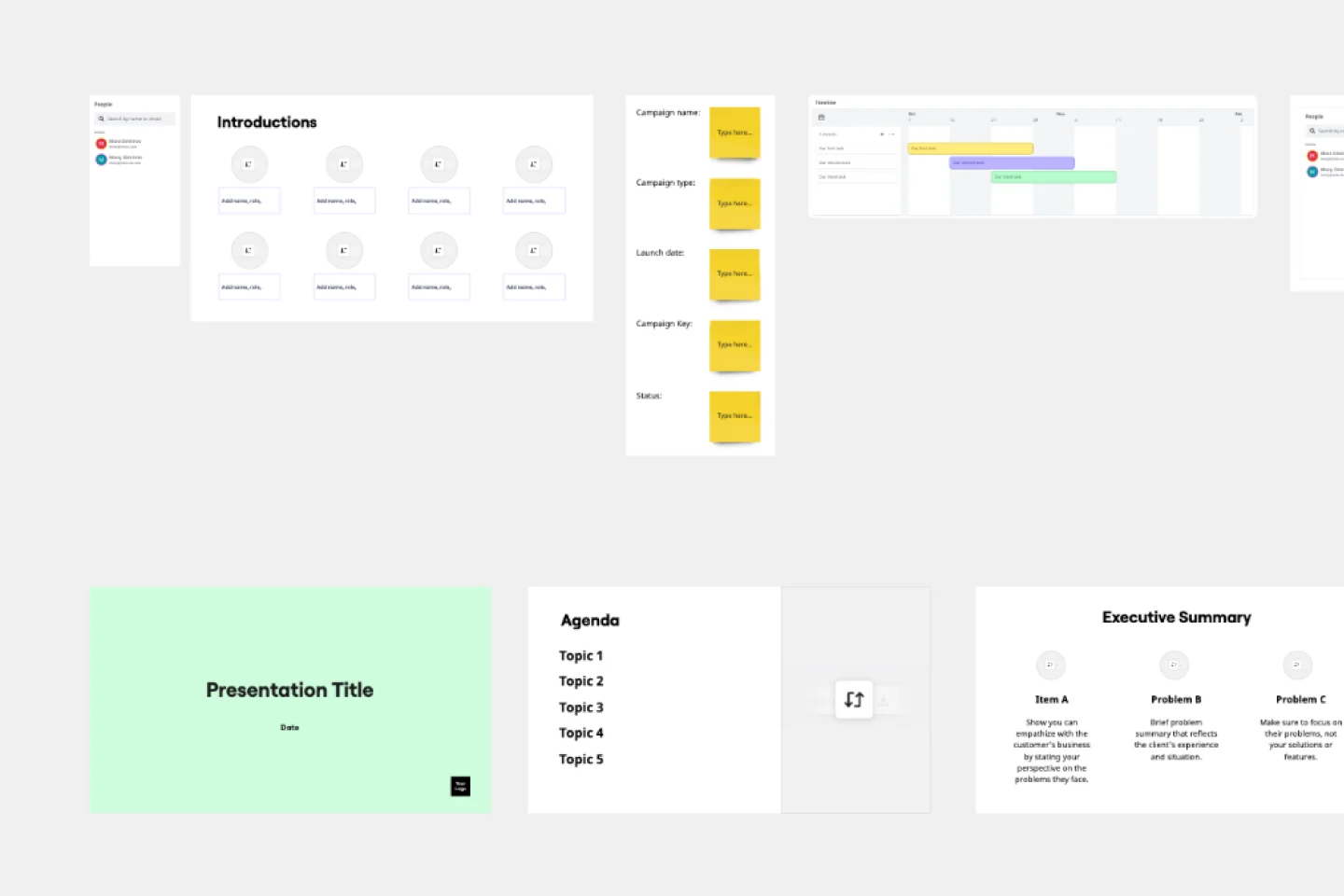About the Communications Plan template
A great message is only effective if it reaches the right people at the right time. The Communications Plan template provides a visual framework to move your team from scattered ideas to a unified strategy. It’s a dedicated space to ensure every piece of communication is purposeful, planned, and powerful, whether you're launching a product, announcing a change, or running a campaign.
How to use the Communications Plan template
Define your Target Audience. Who are you trying to reach? Use the first column to create a clear picture of your audience and their needs.
Set your Objectives. What do you want to achieve? Define the specific, measurable goals for your communication plan.
Establish your Positioning. How do you want your message to be perceived? This column helps you define the unique angle and value of your communication.
Craft your Messaging. What are the key points you need to convey? Develop your core messages to ensure they are clear, concise, and consistent.
Plan your Format and Distribution. Where and how will you share your message? Decide on the channels and formats.
Determine the Frequency. How often will you communicate? Outline the cadence of your communication to keep your audience engaged.
Why use the Communications Plan template?
Ensure a consistent message. By developing all your messaging in one place, you can avoid mixed signals and ensure everyone on the team is aligned.
Align stakeholders from the start. The visual layout makes it easy for everyone to see and agree on the plan, creating buy-in from day one.
Connect strategy to execution. This template provides a clear roadmap that connects your high-level objectives to the tactical work of creating and distributing content.






